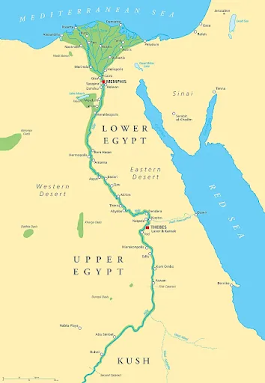Blog 3 - Egypt: Opportunities and Challenges for the Integrated Water Resources Management framework
Hello everyone and welcome to blog 3. From this blog onwards, we will focus on each countries and their specific water and political dynamics. This week we are talking about Egypt and we will cover the implementation of the Integrated Water Resources Management through a decentralization process as a policy intervention against water insecurity. We will observe the framework of the Integrated Water Resources Management, its practical implementation in Egypt and how does that target water insecurity?
Since 1970, Egypt has been consuming more water than naturally available originally caused by multiple pressuring factors such as the population growth, increased food demand, unreliable climate and increasing demand on the Nile making its water consumption pattern more and more unsustainable (Waseem 2017). Freshwater availability in Egypt decreased from 1893 m3 /per capita/per year in 1960 to 700 m3 /per capita/per year in 2012 showing a growing scarcity of freshwater resources which
 |
| Nile River which accounts for 98% of its renewable freshwater resources . |
During the March 2000's World Water Forum, "Water Security" was defined under the following condition: 1- if freshwater resources and its ecosystems are protected and improved, 2-' if sustainable development and political stability are promoted', 3- if every person can access and afford safe water for a healthy and productive life and 4- if vulnerable populations are safeguarded from water hazards (Savenijie and Van der Zaag 2008). In order to achieve Water Security according to Savenijie and Van der Zaag (2008), there needs to be a comprehensive approach to the management of water resources. One of the existing framework for a sustainable management of resources is the Integrated Water Resources Management (IWRM) developed by Savenijie and Van der Zaag (2008). It proposes to account four dimensions (water resources, water users, spatial scale, temporal scale) of water to provide an optimal management cycle integrating different sectors and policies of national economic management (Abdelgawad & Al 2010).
To conclude, IRWM provides a theoretical solution to Egypt's unsustainable water management which progressively implemented by the relevant institutions. However, challenges to a sustainable water management persists. The IRWM's programs are still too broad and distinct initiatives that hinder the general efforts of the PIM while more coordination would save time and funding according to (Abdelgawad and al. 2010). Aside from a deficient management, the other issues relating to water resources persist such as water quality management and the Nile dispute.



How does Egypt's IWRM affects her relationship with her neighbours?
ReplyDeleteHi Clement, thank you for your question. Egypt is taking into account its neighbour when implementing the IRWM its main source of water comes from a ressources that is shared with other 7 upstreams countries.They are often dispute over the share of each country on the Nile reserve and an efficient IRWM framework would account for the uncertainty of this volume. Kenza
ReplyDelete